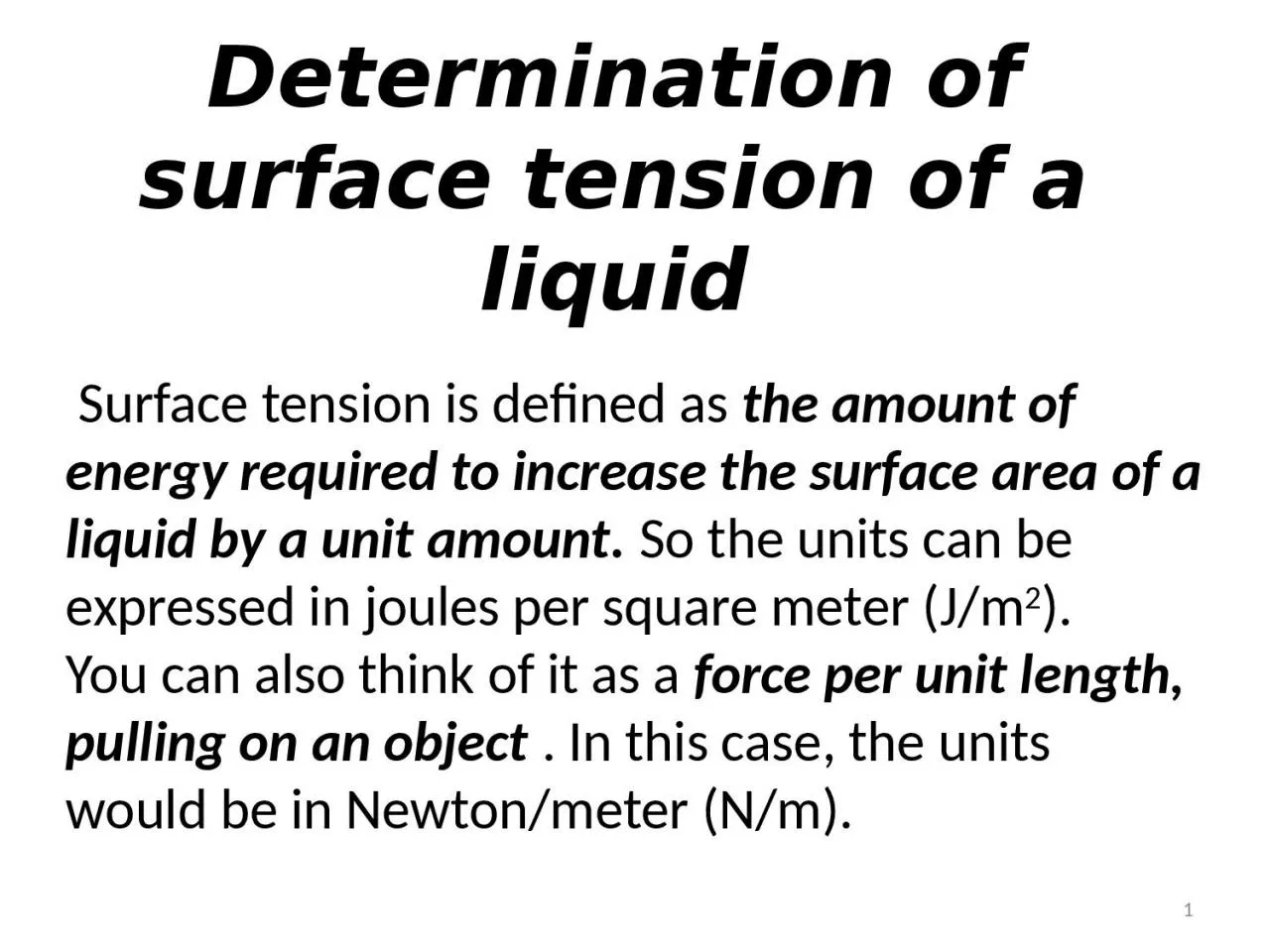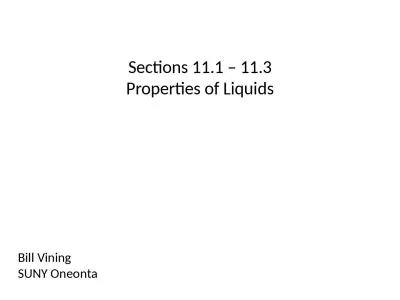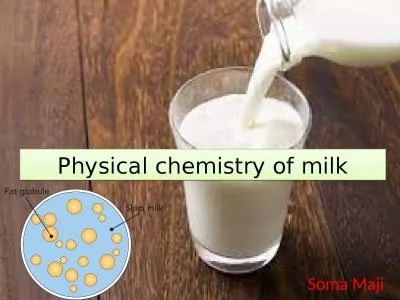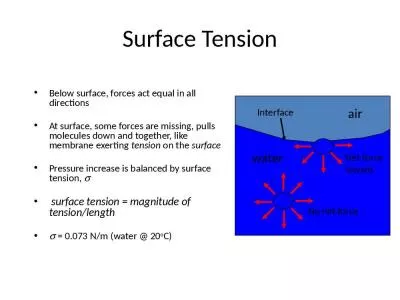PPT-Determination of surface tension of a liquid
Author : harmony | Published Date : 2023-09-06
1 Surface tension is defined as the amount of energy required to increase the surface area of a liquid by a unit amount So the units can be expressed in joules
Presentation Embed Code
Download Presentation
Download Presentation The PPT/PDF document "Determination of surface tension of a li..." is the property of its rightful owner. Permission is granted to download and print the materials on this website for personal, non-commercial use only, and to display it on your personal computer provided you do not modify the materials and that you retain all copyright notices contained in the materials. By downloading content from our website, you accept the terms of this agreement.
Determination of surface tension of a liquid: Transcript
Download Rules Of Document
"Determination of surface tension of a liquid"The content belongs to its owner. You may download and print it for personal use, without modification, and keep all copyright notices. By downloading, you agree to these terms.
Related Documents














